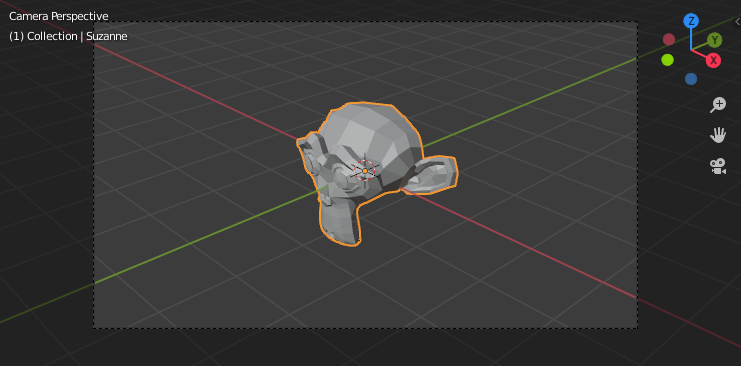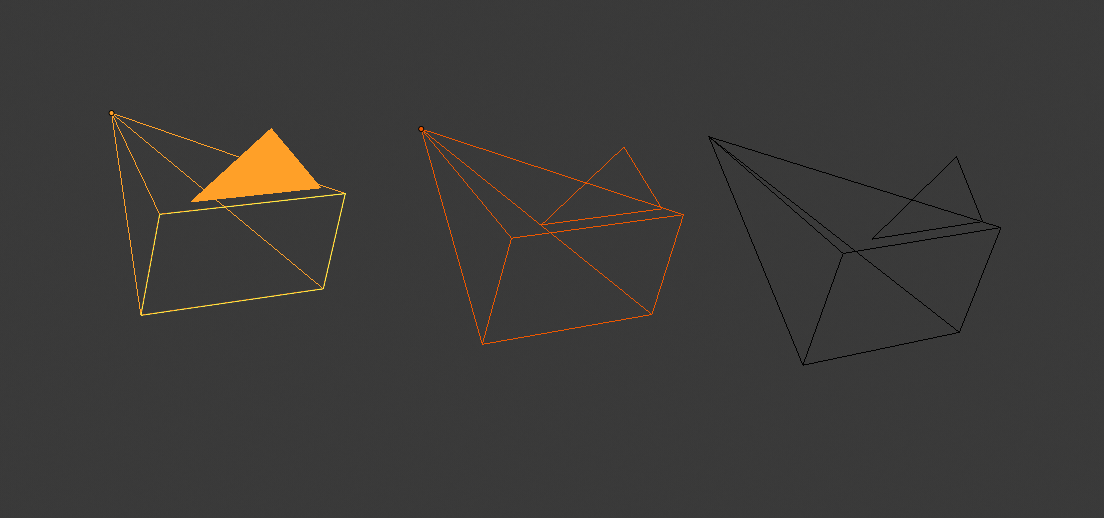相机视图

猴头的相机视图。
The Camera view shows the current scene as seen from the currently active camera's view point.
The Camera view can be used to virtually compose shots and preview how the scene will look when rendered. The rendered image will contain everything within the dashed line.
See also
Camera Settings for details how camera settings are used for display & rendering.
Hint
The active camera can be selected while in camera view using the camera frame (assuming the object isn't hidden).
查看活动相机
参考
- 模式
所有模式
- 菜单
- 快捷键
Numpad0
This switches the view to the active camera. The triangle above the camera will become shaded when active.
设置活动相机
参考
- 模式
物体模式
- 菜单
- 快捷键
Ctrl-Numpad0

活动相机(左)在其上方显示实心三角形。
This is the camera currently used for rendering and when viewing from the camera.
This sets the current active object as the active camera & switches to the camera view.
The active camera can also be set in the Scene tab of the Properties.
Note
The active camera, as well as the layers, can be specific to a given view, or global (locked) to the whole scene. See Local Camera.
动画化相机切换
By default a scene contains one camera. However, a scene can contain more than one camera, but only one of them will be used at a time. So you will only need to add a new camera if you are making cuts between them. See Animating Cameras.
相机边界框
参考
- 模式
所有模式
- 菜单
- 快捷键
Home
在3D视图的屏幕区域内居中放置相机视图,并调整视图的大小以适合该区域的边界。